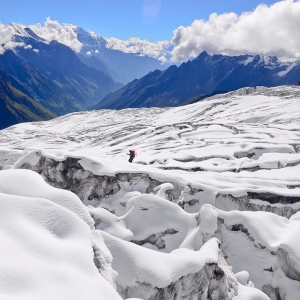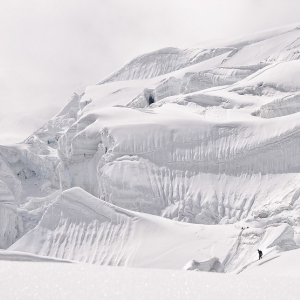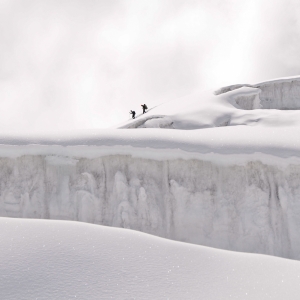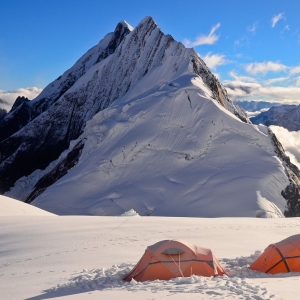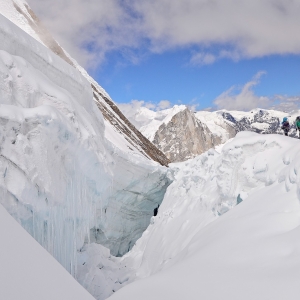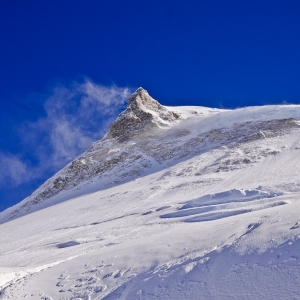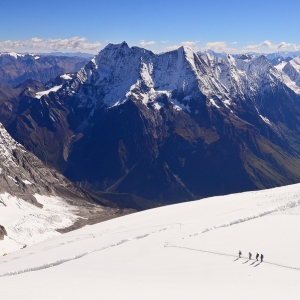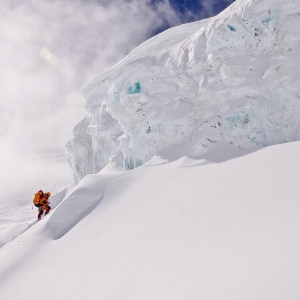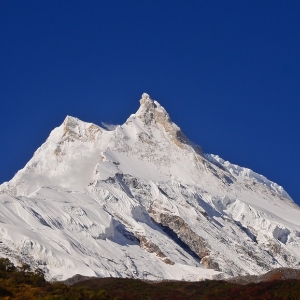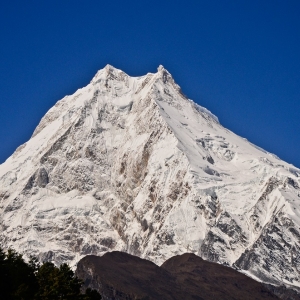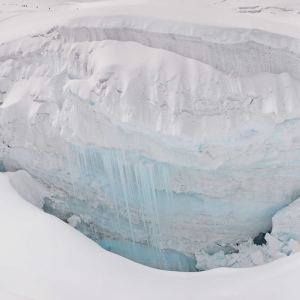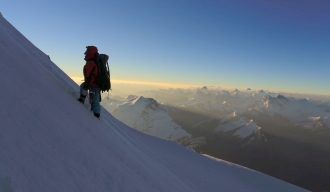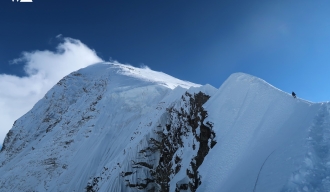Mt.MANASLU EXPEDITION
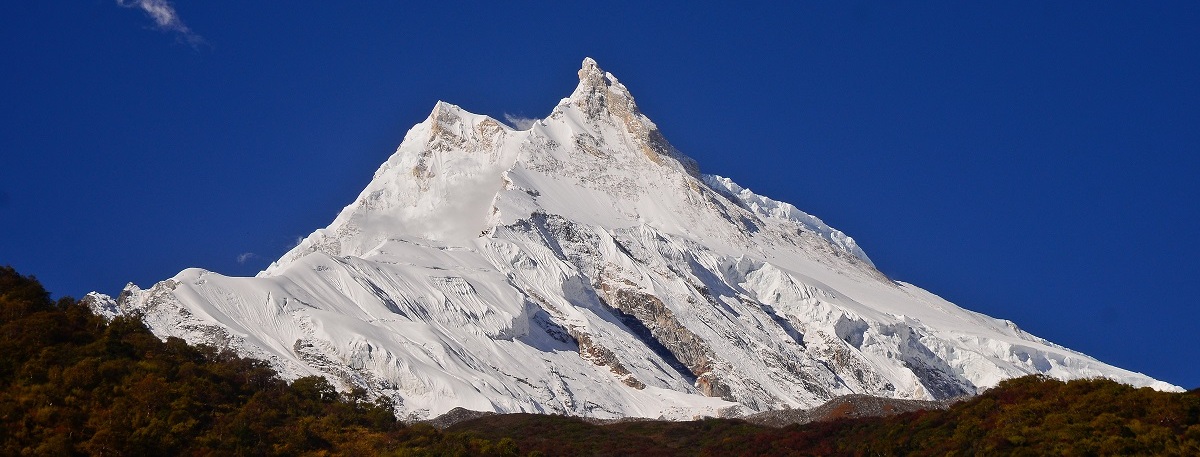
Mt.MANASLU EXPEDITION
Nepal
- 49 DAYS
- 10 MAX GROUP SIZE
-
8156m
MAX ALTITUDE  10
Very Demanding
10
Very Demanding
Trip leader

Manaslu is the eighth highest mountain in the world at 8,163 metres above sea level. It is located in the Mansiri Himal, part of the Nepalese Himalayas. If you are considering climbing an 8000er, Manaslu should be one of the preferred options. The mountain's long ridges and valley glaciers offer feasible approaches from all directions, and it culminates in a peak that towers steeply above its surrounding landscape, and is a dominant feature when seen from afar.
The expedition begins in Kathmandu after the permit formalities, we drive to Arughat (950m). We then start the 11 day hike to the Manaslu Base Camp, gradually gaining height and acclimatizing our bodies to altitude. Enroute, we have a rest at Samagaon, the biggest village in the region. After touching base camp, we rest adequately, recuperate and start preparing for moving higher up on the mountain.
Itinerary
Trip Cost
9,95,900 / 15500
KATHMANDU TO KATHMANDU , TWIN SHARINGPayment Schedule
₹2,50,000 / $4000 - Booking Amount
TRIP COST INCLUDES
- Transport as per itinerary.
- 4 night at three star hotel accommodation in Kathmandu on B&B basis.
- Experienced and government licensed trekking and climbing Sherpa guide during the trekking and climbing period.
- Appropriate number of porters during the trekking period.
- Land transportation from Kathmandu-Arughat-Kathmandu for all climbing members, Sherpa guide, liaison officer and kitchen staff.
- All trekking kitchen tent, storage tent, dining tent, client tents, toilet tents, tables, chairs and cooking utensils for base camp.
- 3 meals a day: Breakfast, lunch and dinner with tea/coffee during the trekking in lodge & full board meals above base camp.
- Accommodation at hotel/lodge/guest house or tent camps during the trekking period.
- All camping accommodation for members and staff during trekking and climbing period on twin-sharing basis.
- 40kg baggage allowance per person during the trekking period. This will be carried by porters/mules.
- Daily weather report services from Seattle.
- Trekking Permit (Manaslu Conservation Park entry fee). Manaslu restricted area trekking permit during the expedition period. TIMS card (Trekking Information Management System).
- Expedition Royalty and permit of Nepal government to climb Mt. Manaslu.
- Nepalese Government Royalty.
- One experienced, trained, government Licensed and summiteer climbing guide Sherpa
- All wages, equipment, medical and accident insurances for all involved staffs during the trekking and climbing period.
- Helicopter rescue insurance for all involved expedition staff.
- Equipment allowances and wages for climbing Sherpas, cooks, kitchen assistant and government liaison officer.
- First aid medical kits for the group and the staff.
- Satellite phone carried by guide for communication. Available to clients with the cost of $3USD per minute.
- Appropriate high altitude food for all clients and staff at base camp and above as required.
- Heater will be provided at base camp for the dining tent.
- Emergency oxygen mask and regulator provided upon request of client with requirement appropriate charge.
- Each client will have an individual tent available in the Manaslu advanced base camp.
- Solar panel for light and electronics charging above Base Camp.
- All tents for camp 1, 2 and 3.
- Gamow Bags (Portable hyperbaric chambers) for high altitude sickness.
- 2 Bottles (4L) of Poisk Oxygen will be provided for each member.
- Latest model of Summit or Top out system mask and regulators.
- We provide Sherpa's tents, food for climbing and insurance.
- Free assistance service for cargo clearance and duties.
- EPI cooking gas and stove will be provided in higher camps for cooking food.
- Back-Up generator for lighting at Base Camp.
- Transportation of food supply from Kathmandu to base camp by porter/mules.
- Our service charge and government taxes levied in India / Nepal.
TRIP COST EXCLUDES
- All Personal climbing gear.
- Any packed food/snacks, aerated drinks, energy drinks, mineral water, alcohol, cigarettes, chocolates, or any other food consumed beyond the ones mentioned in the inclusions.
- Clothing, packing items or bags, personal medical kit, personal trekking gear.
- Any extra expenses arising out of various/unforeseen situations like natural calamities, landslides, political disturbances, strikes, changes in Government regulations, etc.
- Rescue, repatriation, medicines, medical tests and hospitalization expenses.
- Medical insurance and emergency rescue evacuation if required.
- Travel insurance and helicopter rescue.
- Lunch and dinner during your stay in Kathmandu (except for the farewell dinner).
- Nepal custom duty for import of expedition equipment if applicable.
- Items of personal nature, laundry expenses, tips.
- Tips / summit bonus etc.
- Airfare of international flights.
- Nepal entry visa fee (Visa insurance is easy upon arrival).
- Any extra services, products, offers or activities which are not mentioned in the itinerary.
- Any other item not included in “THE PACKAGE COST INCLUDES” section.
What to expect
The highest difficulty rating for some of the most difficult mountains in the world. Any 8000m peak would come under the category of an 'Extreme Climb'. Expeditions to 8000m peaks will need a minimum of 50 days. One needs to have a lot of climbing experience and should have climbed atleast one 7000m mountain and a few 6000m mountains. You need to be in the best shape of your life to be attempting this climb. High commitment level is mandatory and one should spend atleast 8-10 months to physically & mentally prepare for such climbs. Normally on these climbs the supplement oxygen also comes into play.
A fierce determination and a burning desire to climb the mountain are the essential pre-requisites for joining this expedition. One must have done a few high altitude treks and must have climbed some glaciated peaks above 6000m. One needs to be familiar with walking in snow and ice and must have a good standard of fitness. You should be familiar with Ice Axe arrest and crampon skills, the use of ascenders (jumar) and descenders, and how to use your particular harness.
You have full support till base camp which means you only carry a back pack till BC. We encourage climbers to carry a little more weight than just a back pack as it helps higher up on the climb but it is optional. Above base camp the sherpa team puts all the fixed ropes and hauls all the common gear - food, fuel, tents etc
All climbers are expected to carry all their personal gear with them - climbing eqpt/ clothing/ sleeping bag/ mattress etc. We also do a couple of load ferries on the way up. On the way down we normally bring it all in one go.
At high camps - Food & water is prepared by the guides & sherpa team. If someone wants to help with shoveling snow/ pitching tents etc he/ she is welcome but again it is optional.
Having very high fitness levels is essential and climbers would need to train considerably for these climbs.
Besides being physically fit and having the climbing skills, you need to have the proper attitude and
mental discipline. You will need to be willing to work hard day after day, with no comforts. You may
need to dig deep into your reserves after a long day of climbing in bad weather to help set up camp,
help a team member. organise your tent, change into dry clothes and be ready for another such day.
We would be melting snow to make water at high camps (5-6 days) and will have simple food to
survive on.
Apart from the mental strength having a positive attitude and the ability to get along well with
strangers in stressful situations is very important. You would be sharing a lot of time with your tent
partners especially if we are waiting out bad weather. Having good manners and hygiene would be
important. Everyone must learn patience and relax! At high camps tou could be paired up with a
person of a different gender and hence you could be required to give even more private time & space
to your tent mate.
15-20 days on the mountain would be very demanding but high motivation can overcome most of the
difficulties. Waiting out storms and bad weather is quite difficult, especially at high altitude. Everyone
must learn patience and relax!
If you are not prepared, you may not be allowed to continue the climb.

